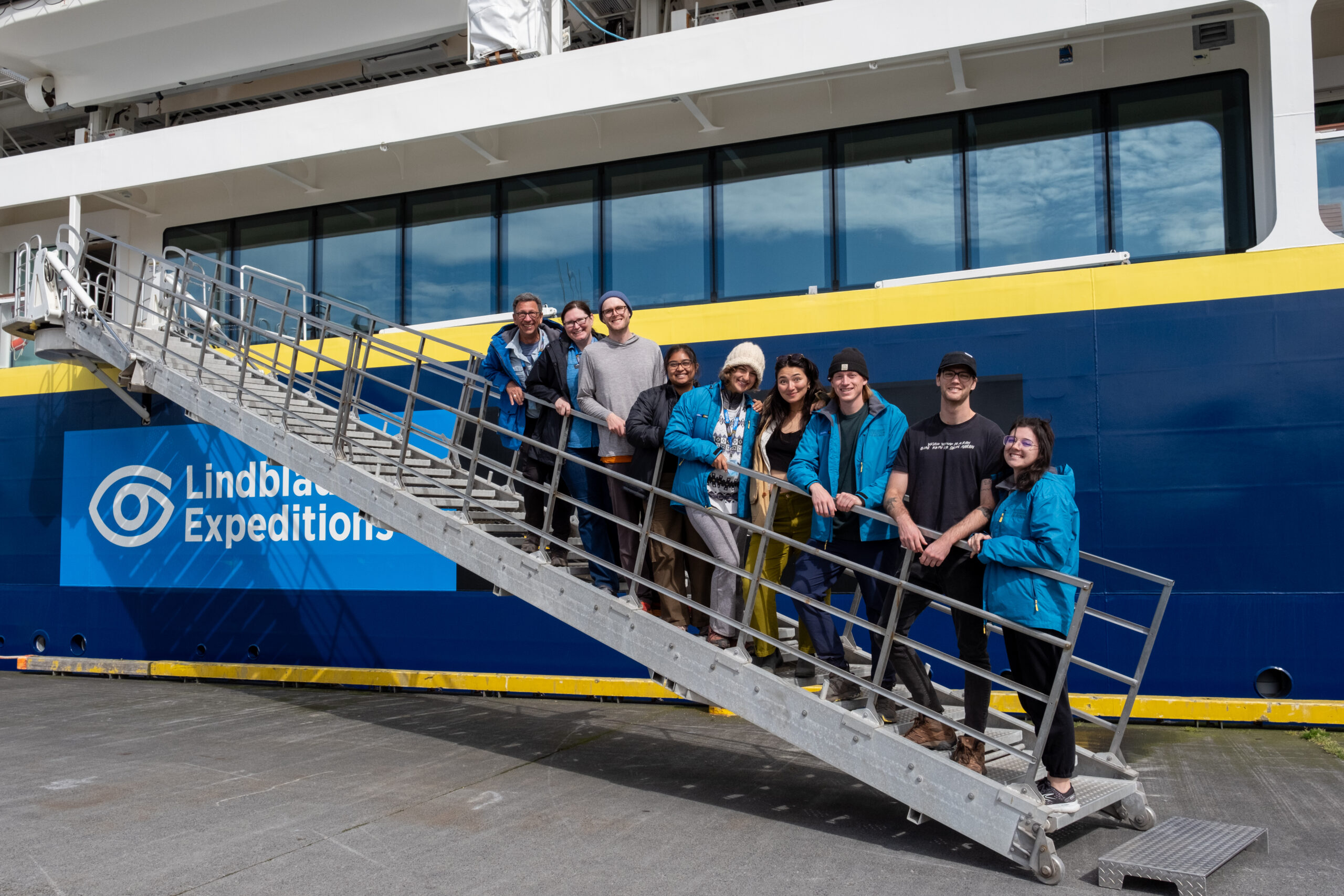(Francisco "A.J" Camacho)
A concrete proposal: The future of eco-friendly architecture
We shape our buildings; thereafter they shape us.
-Winston Churchill, 1943
Our buildings define us. Not only do we need them to survive, but—consciously and subconsciously—they shape our worldview. As world temperatures rise, we will rely on them even more in the face of oppressive summer heat, intensifying blizzards, and other extreme weather events. But air conditioning buildings and producing concrete—the most important building material—amount to 12% of the world’s total greenhouse gas emissions. So to move our planet forward, we need scalable innovations in how we build and what we build with.
The Innovation Center at the Pontificia Universidad Católica de Chile looks stylish, promotes more collaboration than a traditional office building, and cuts electricity consumption by two-thirds just because it uses fewer but larger glass windows. The Canada-based company CarbiCrete has developed concrete that actually captures concrete from the atmosphere. And the best part is: these solutions are easy to implement! Some might even call them common sense. By expediting the rollout of these production and architectural techniques, we can drastically limit the damage of climate change and help provide for a better future.
Full transcript below:
FRANCISCO CAMACHO, HOST:
I want to take you back to about a year ago when I was studying in Santiago, Chile. Everyone—and I mean almost literally everyone—in Chile had bemoaned that the mountains didn’t have snow year-round anymore. In the summer, it now melts. Even 6 years ago, there was always a little snow visible at the peaks year-round. Unlike in the United States, the Chileans never gave me any sense of climate change skepticism: they knew for certain that the increased CO2 in our atmosphere was warming the earth and melting their beloved snow.
So, how do we stop the snow from melting? Obviously, tackling climate change is an enormous problem with almost-infinite components, but I want to focus on one aspect that is rarely mentioned: our buildings. According to a 2022 study from researchers at the National Renewable Energy Laboratory, energy generated for air conditioning buildings accounts for 4% of the world’s annual greenhouse gas emissions. Moreover, the world’s most important building material, concrete, is incredibly carbon intensive: concrete production accounts for a whole 8% of global emissions. So, these are the two questions I come to this story with: How can we design buildings to reduce greenhouse gas emissions and how can we make more eco-friendly concrete?
First, let’s talk about the building’s design—the architecture. For this, I want to take you back to Chile. It was June of 2022 and my brother had just arrived to visit me. Since my brother was—is—studying architecture, I took him to the main campus of the Pontificia Universidad Catolica de Chile, where I was studying, and brought him to what at first just looks like a concrete cube near the entrance. It’s called the Innovation Center and when you enter onto one of the large balconies you get a view of the Andes mountains that is hardly paralleled anywhere else in the city. It was winter in the southern hemisphere and I remarked to my brother that I was very happy to see snow on the mountains—again, I had done all summer hardly seeing any.
My brother pointed out some interesting features of the building’s architecture. Mainly, there weren’t many windows, and the large ones behind the balconies were well-shaded from above. This meant that sunlight rarely came into direct contact with glass in the building even as a healthy amount of natural lighting did come through. This, my brother observed, must save dramatically on AC costs. That’s because the greenhouse effect caused by sunlight hitting the glass would warm the building, meaning the AC needs to run more intensely to keep the same temperature. Think I’m exaggerating? The average glass office tower consumes 120 kilowatts of electricity per square meter per year. The Innovation Center uses only 40 kilowatts per square meter per year. So this design cut the building’s electricity consumption—and therefore long-run carbon emissions—by two-thirds!
But not only is the building environmentally friendly, it’s practical and good looking! Here’s the architect of the Innovation Center: Chilean architect and winner of the Pritzker Prize, Alejandro Aravena in his TED Talk:
ALEJANDRO ARAVENA, ARCHITECT:
It is accepted that for such an aim, knowledge creation, interaction among people, face-to-face contact, it’s important, and we agreed on that. . . . And what we did was, let’s have an open atrium, a hollowed core, the same collection of floors, but have the walls and the mass in the perimeter . . . you are able to see what others are doing from within the building, and you have a better way to control light.
FRANCISCO CAMACHO:
So by putting the building’s essentials—plumbing, cables, etc—in the walls and leaving the center open, not only does sunlight reflect away from the building but people can more easily communicate on their work.
But as I said, the practicality is only one aspect: the Innovation Center looks good, too! One might see in the Innovation Center similarities to the Monumental Architecture of Louis Kahn. In the 60s and 70s, architects focused on making buildings feel lighter with thinner walls and more glass, but Kahn saw the importance of monumentality, which in turn contradicted the course of architecture at the time. Aravena, like Khan, uses concrete to highlight light, shadow, and the authenticity of a building.
To hear his take, I sat down with Chilean architect Marco Diaz. This is what Diaz had to say about the Innovation Center and its architect Aravena:
MARCO DIAZ, ARCHITECT (translated):
I believe in itself, the building presents an important aesthetic impact, from the point of view that it comes out as an innovator. In this way, with the objective being to build an innovation center, its aesthetic, its tectonic, its form, and its proportions are very distinct from what is typically done. From that point of view, the aesthetic point of view and from the scale of how he works, he is very innovative. I think he has a first objective completed in some way because of what he was assigned and the product he created.
FRANCISCO CAMACHO:
Okay, so that’s the architecture question out of the way: By following the models of architect Alejandro Aravena and the Innovation Center, we can design more environmentally-friendly, collaborative, and stylish buildings! But this still leaves one big problem: the Innovation Center is made almost entirely of concrete. And concrete burns a LOT of carbon emissions—8% of all annual greenhouse gasses. In fact, if the world’s concrete production was its own country, it would only be behind the US and China in terms of greenhouse gas emissions.
Well, for this we come to part 2 of our solution to green buildings: the material itself. On paper, there is actually an almost-miraculous solution for concrete’s pollution problem: carbon capture. One of the companies leading this charge is the Canada-based CarbiCrete. I wanted to understand just how their product worked.
MARTIN ESCARBELT, CARBICRETE:
You mentioned that concrete is a very carbon-intensive battery, which is true and it is not mostly due to the presence of cement within it. Cement’s production process is extremely emissions-heavy. So we say that typically for a traditional cement manufacturer, there is 800 kilograms of CO2 that are emitted. And that is in the origin of the fossil fuels that are burned and because of the chemical process that happens in the kiln when it is being produced.
So at CarbiCrete we decided to tackle the root of the problem by entirely removing cement from concrete. But it is important to note that cement is extremely important in concrete. We usually say that cement is to concrete what flower is to bread. You cannot do with it – without. And so we replace the cement with a byproduct from the steeling industry that’s at the moment in 2023, and it has always been a waste for steel manufacturers. Once the concrete is a phone using steel slag, we use the same processes. The same machinery. We place the concrete products into a curing chamber. So curing is a fancy world to say solidifying. It’s the process that needs to take place to give the concrete – insert strength. And once in there, we inject CO2 into the chamber that will react chemically with the steel slag to form CaCO3—calcium carbonate.
This makes the concrete – its strengths up to 30% better than conventional concrete. And CO2 is as a consequence permanently within the concrete and removed from the atmosphere.
FRANCISCO CAMACHO:
Absolutely. It – it does sound very much on its face like a win-win. But my question is, you know, is it, is it scalable? Like, is it actually, is it hard to reproduce this on a wide scale or is it relatively easy?
MARTIN ESCARBELT:
Yes, so it is a scalable solution. There is some limiting factors. As they just said, it is – what we are using is a byproduct of the steel industry, which means that we need to have a steel industry in the neighbor – in the neighborhood. But fortunately, most of the big markets that we’ve targeted have that. So the US produces a lot of steel: Canada, Europe, China, India. So that’s something to keep in mind, but we are able to scale up. We have just proven our technology in an operational setting in Quebec where we’ve been producing for quite some time, thousands of blocks every day and we are in the process of scaling up at the moment in the same facility and now we are ready to – we have this province solution, this proven recipe – we are already ready to implement the technology elsewhere and that includes Canada. So Quebec, Ontario for now, the US, Europe, and India, as I said, as well as other places.
FRANCISCO CAMACHO:
So carbon capture concrete, like what CarbiCrete makes, is 30% stronger, cheaper, and uses waste from steel manufacturers. It seems pretty amazing. But at this point, I was worried that there might be a catch. I can consider what I like to call the electric vehicle problem. EVs are way better for the environment over the course of their lives than a typical gas-fuelled car is. However, because of how much energy it takes to make a new car of any model, the environmentally optimal option is usually to just ride gas-guzzling cars until they’re broken for good before buying an EV. Believe it or not, this isn’t a problem with CarbiCrete’s carbon-negative concrete.
MARTIN ESCARBELT:
First off, what we do – what we do most of the time is retrofit existing plants. So we don’t need to build an entire new thing every time we want to implement our solution. And what we are – and the solution we are using is not carbon-intensive as of itself. And we are very attentive to the authentication and verification processes. We’ve performed FCAs and other analysis, and we are communicating on a case-by-case basis to make sure that the carbon reduction and the carbon removal is verified as real.
And what we can reasonably achieve once the plant is operational is 250% reduction in carbon emissions. So both through carbon emissions avoidance and carbon removal and so we can just try to visualize a concrete block. We can achieve carbon footprints as low as -1 kilogram per block. Which, as we mentioned, is in the carbon-negative zone.
FRANCISCO CAMACHO:
There you have it! A combined 12% of the world’s annual greenhouse gas emissions—4% from air conditioning and 8% from concrete production—has the potential to be almost completely eliminated! The technology and designs are already here. So to move our planet forward, we need to lean into these techniques! Even though CarbiCrete is cheaper and Aravena’s designs are common-sense practical, change moves slowly on its own. To really make this impact felt, governments, NGOs, and ordinary people need to be aware of and promote their use. And heck, by doing this, maybe we’ll come across even better technologies and architectural models.












.jpg)






